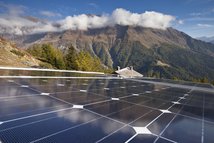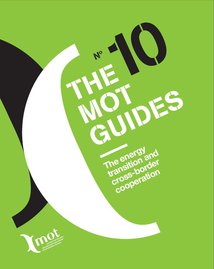Energy
Overview
Leading projects
The TRION-Climate project in the Upper Rhine region
The Energy network of the Upper Rhine Metropolitan Region, named TRION, aims to make the Upper Rhine region a model for renewable energy.
Currently, it is pursuing five goals:
- the networking of key players in the fields of energy and climate protection around the central topic of "energy efficiency of buildings".
- cross-border experience sharing between economic, scientific, and administrative key players
- cross-border secondary training for sustainable construction professionals
- support for the development of cross-border projects in the fields of energy and climate protection.
- advice and information on energy and climate protection in the Upper Rhine
The PASSAGE project for accelerating the energy transition in the straits of Europe
The principal ambition of the PASSAGE project is to find cross-border solutions for reducing the carbon footprint and incentivising initiatives favourable to the energy transition. Six European straits are involved in the project: the Strait of Dover, the Fehmarn Belt, the Corsica Canal, the Strait of Otranto, the Corfu Channel and the Gulf of Finland.
For each of these straits, the project aims to implement a cross-border action plan for accelerating the low-carbon transition, encouraging the emergence of innovative initiatives, contributing to sustainable development and boosting the attractiveness of the straits in the long term.
- The Marine Renewable Energy (MRE) sector in the Nouvelle-Aquitaine-Euskadi-Navarre Euroregion
With considerable exposure to ocean swell, marine renewable energy sources are the key element in energy innovation policy on the Atlantic coast. The Nouvelle-Aquitaine-Euskadi-Navarre Euroregion is aiming to strengthen cross-border cooperation in this field with various projects:
- the “WAKE” project (Wake Energy Akitania-Euskadi), carrying out a diagnostic survey of zones with wave energy resources, with possible impacts and development opportunities
- the “From Seanergies to Seanergy” project, which seeks to network the various players on either side of the border for better experience sharing on marine energy sources
- the “BlueSare” project, which is working to increase the visibility of port infrastructure and technological platforms among local businesses
- SEREH – Energy community at the Germany-Netherlands border
The “SEREH” project (Smart Energy Region Emmen Haren) aims to create a “smart energy region”, guaranteeing optimal energy distribution in a cross-border dimension. The very different energy profiles of the towns of Emmen in the Netherlands and Haren in Germany have pushed local players to cooperate, emphasising their complementarity in order to accelerate the energy transition. By pooling their efforts across the border, the territory of Emmen and Haren aims to achieve neutrality in carbon dioxide emissions before 2050.
Photo copyright: European Union, 2013



